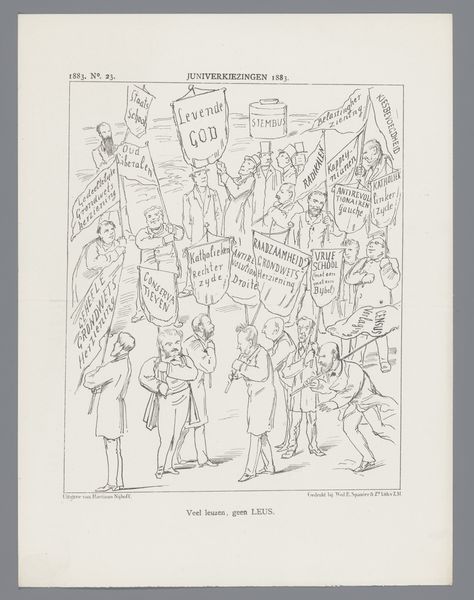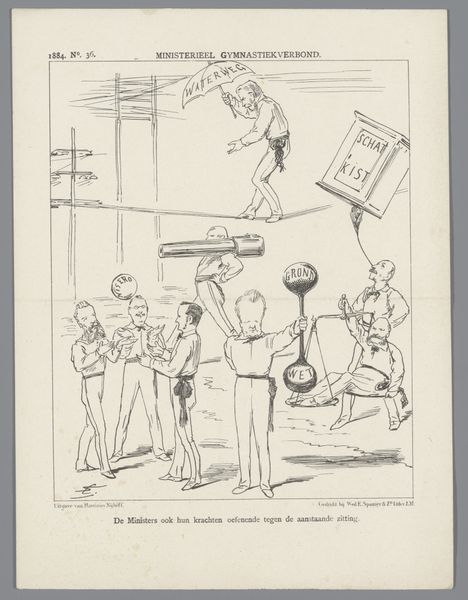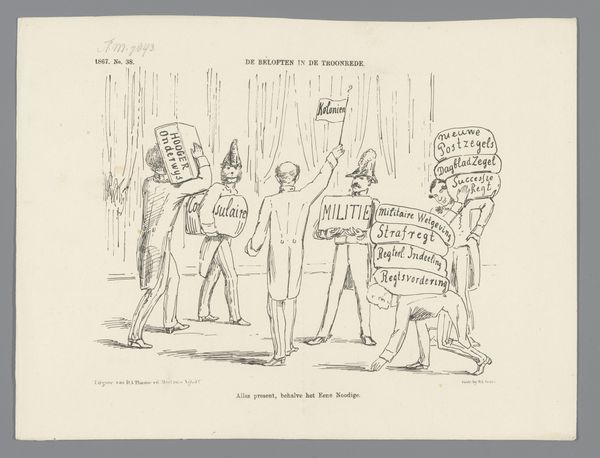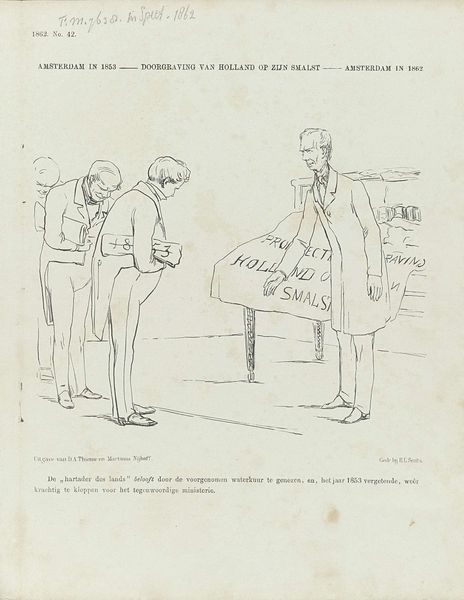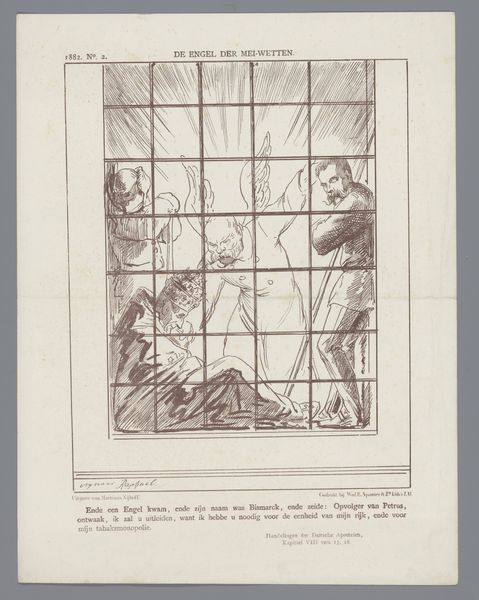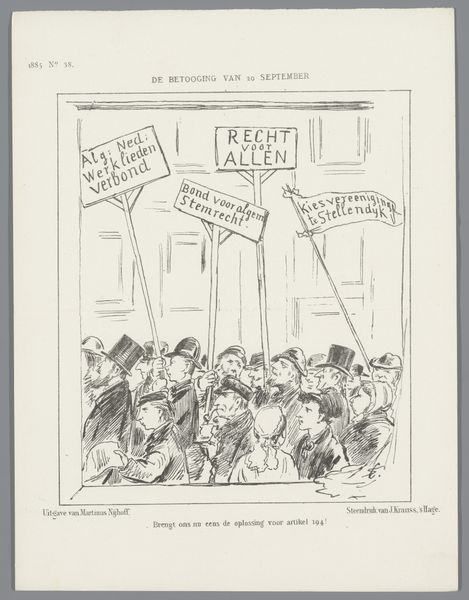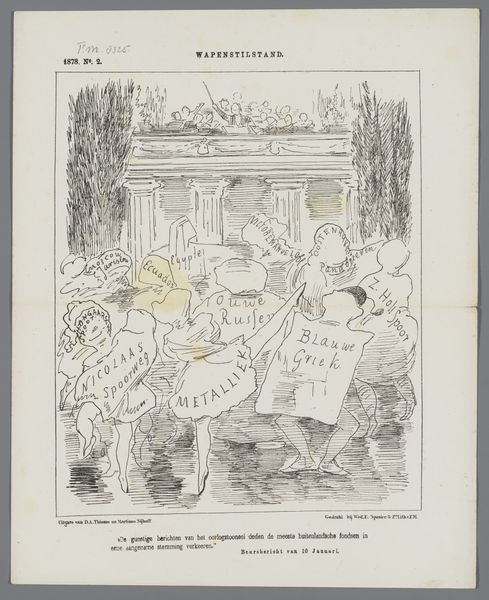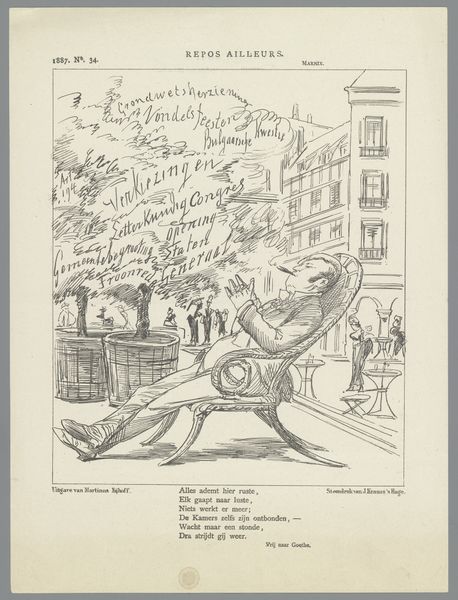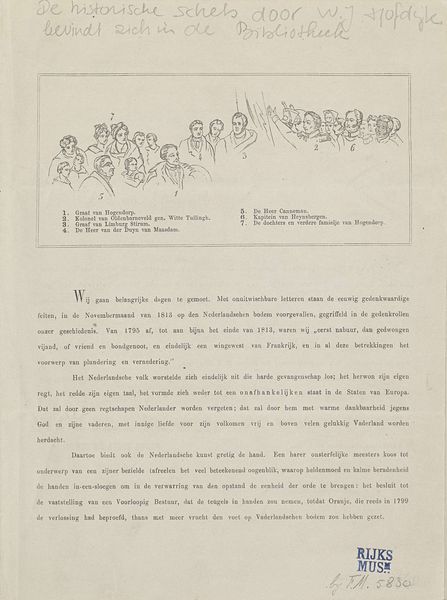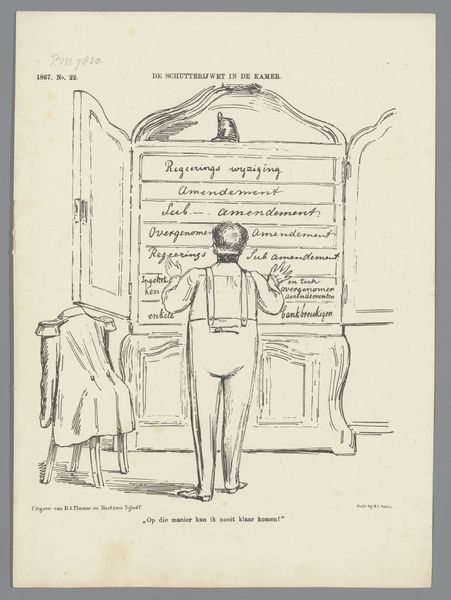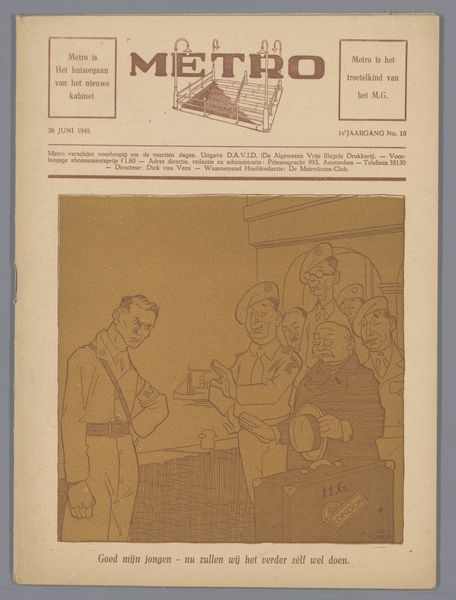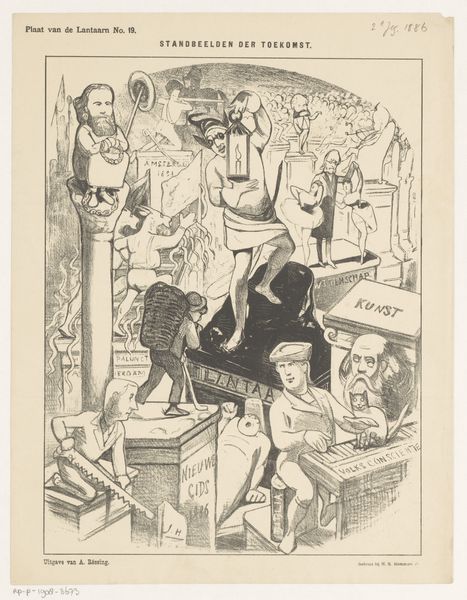
drawing, print, pen
#
drawing
#
comic strip sketch
#
aged paper
#
narrative-art
# print
#
caricature
#
sketch book
#
traditional media
#
personal sketchbook
#
idea generation sketch
#
sketchwork
#
comic
#
sketchbook drawing
#
pen
#
storyboard and sketchbook work
#
sketchbook art
Dimensions: height 275 mm, width 215 mm
Copyright: Rijks Museum: Open Domain
Editor: This is a satirical print from 1867 by Johan Michaël Schmidt Crans. It seems to be a pen and ink drawing, reproduced as a print. Each figure holds a sign with a different ministry title. It's aged, clearly, and has a kind of dark, comical tone. What do you see in this piece? Curator: I see a commentary on the material conditions of governance. Consider the means of production – printmaking, accessible and reproducible – allowing for widespread dissemination of political critique. The drawing itself is quite raw, like a blueprint almost. How do these roughly hewn materials affect its reception? Editor: I guess the roughness emphasizes that it's a mass produced artwork. It feels like quick commentary. Curator: Precisely! And consider the social context. These ministers are identified by the portfolios they physically hold – ‘Marine,’ ‘Colonies,’ ‘War.’ It's not just about the positions, but how visibly and tangibly these responsibilities are borne, represented in this cheap paper. Is Crans making a point about the burden of labor on governing officials? Editor: That’s interesting. It challenges the typical grand portraits of ministers. It shows the real ‘work’ they are in charge of in almost a mundane manner through cheap, accessible print. So, by using humble materials, Crans critiques the social standing of ministers? Curator: In a way, yes, disrupting established boundaries of social power with something disposable. This isn’t meant to last like a painting in a palace; it’s meant to be read and discarded perhaps, influencing public thought in a transient way. What can the materiality tell us about the value—or lack thereof— Crans and society put on the political figures? Editor: So, by focusing on the material aspect and its means of production, you can reveal a lot about how the artist is engaging with, and commenting on, social and political structures of the time. That is useful. Thank you. Curator: Indeed. Looking at the material tells as much, if not more, than an analysis based purely on form or style.
Comments
No comments
Be the first to comment and join the conversation on the ultimate creative platform.
